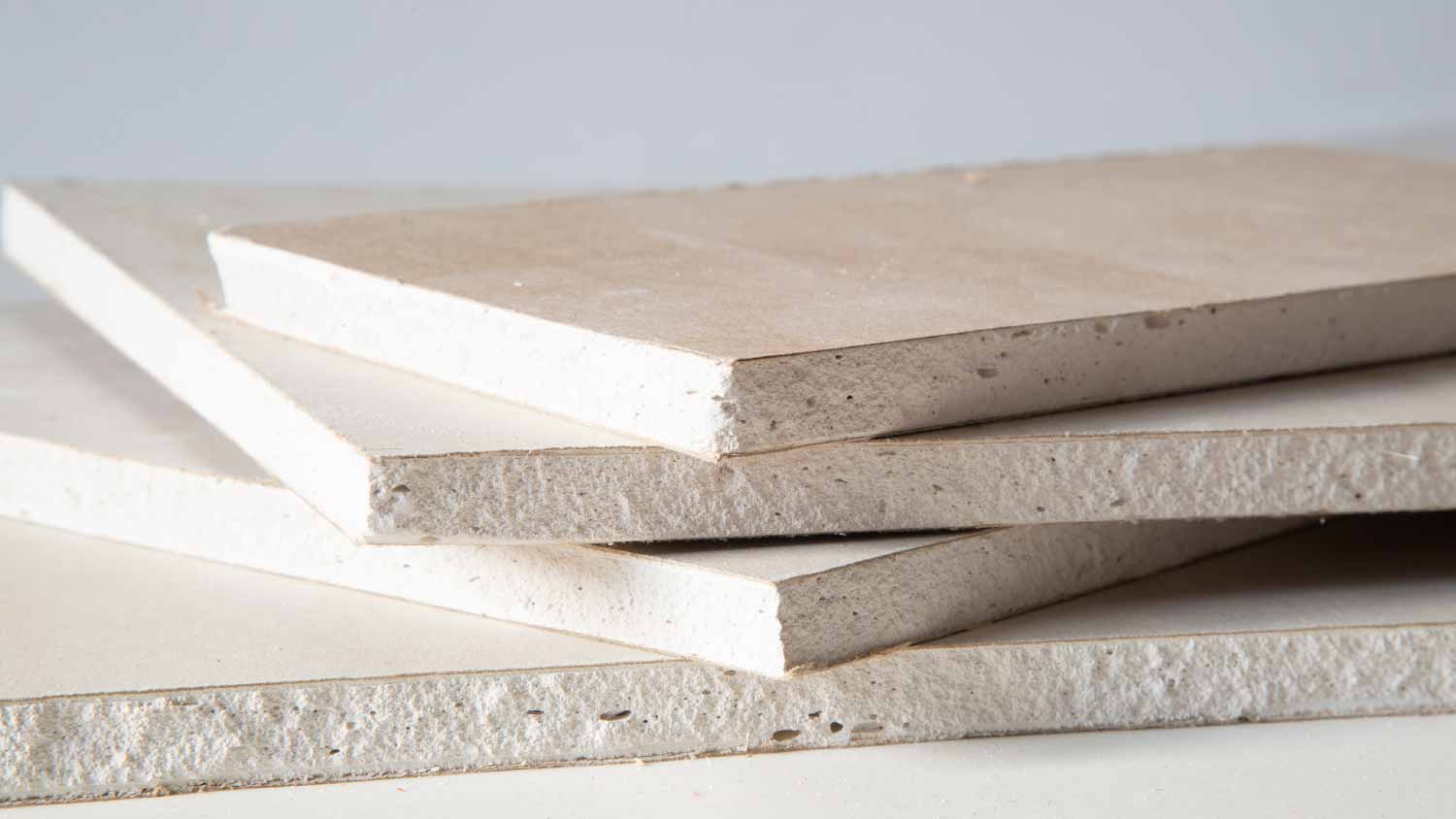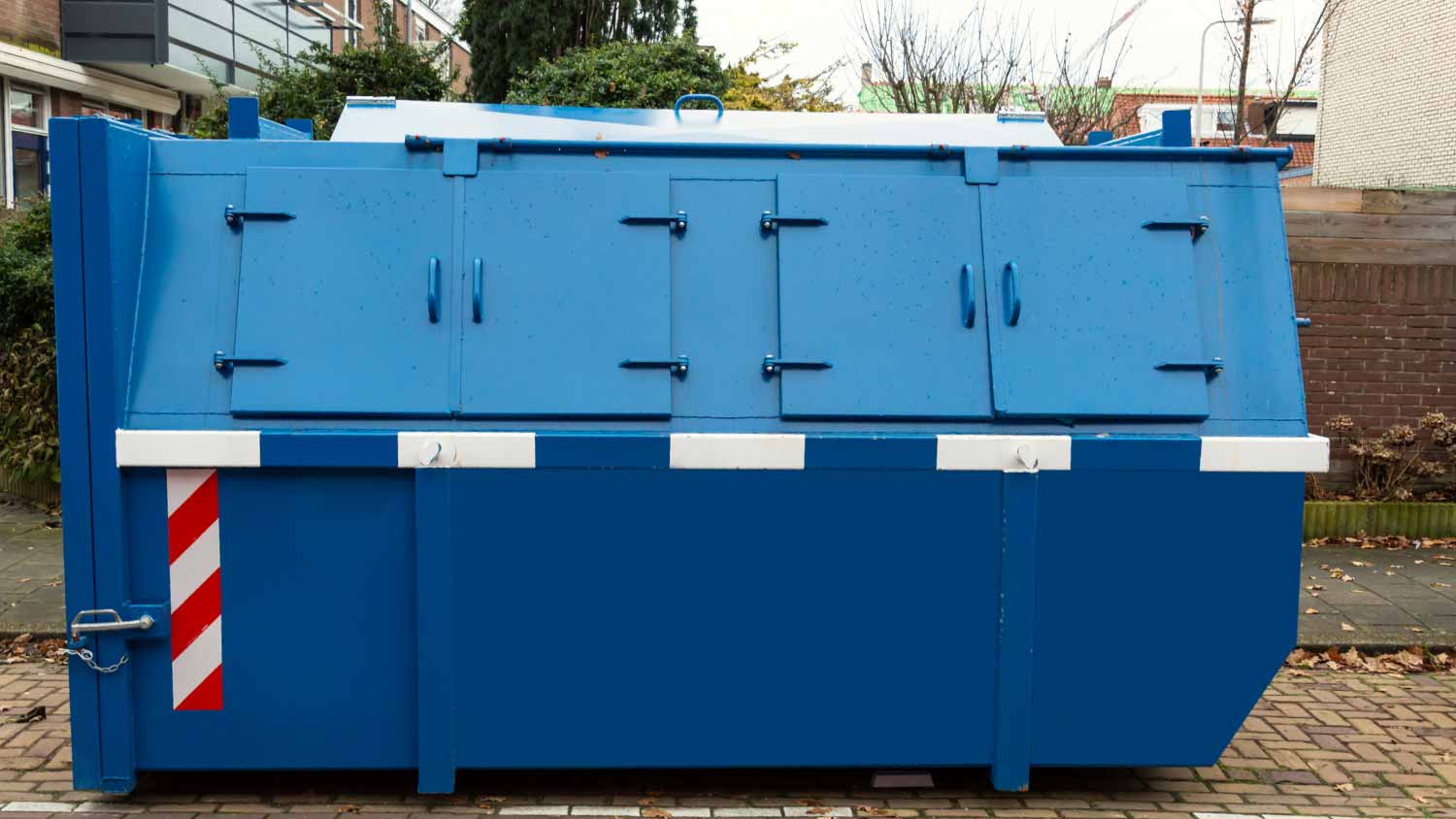How to Dispose of Drywall When You’re Done With a DIY
You can give leftover drywall a new life with these creative disposal ideas


It’s no secret the United States goes through a ton of drywall each year—so much so that drywall production skyrocketed high enough to cover 28 billion square feet in 2022, one of the highest levels ever recorded. But as you likely figured out from your own projects at home, not every square inch of drywall gets entirely used up. There’s typically some amount left over, which may have you wondering how to dispose of drywall so you can get it out of your home and move on to the next project.
Yes, drywall is bulky, awkward, and takes up quite a bit of space, but before you throw it to the curb, there may be other ways you can put this construction material to better use so it doesn’t take up space in our landfills.
Why Dispose of Drywall Properly?
The common ingredients of drywall include gypsum, fiberglass, paper, and additives such as clay, silica, and mica. While most of these ingredients naturally decompose, they can run into trouble in a landfill.
Old drywall that harbors mold and other microorganisms can break down the gypsum or leach into the water supply. In some cases, mixing certain organic compounds with gypsum creates hydrogen sulfide, a highly hazardous and flammable gas. Additionally, drywall installed prior to the late 1980's may contain asbestos. In this case, you'll need to hire a team to transport and dispose of asbestos safely.
In other words, you'll need to know how to dispose of drywall properly. In most cases, your weekly garbage pickup will not accept drywall. You'll also need to check what you can put in your dumpster rental after a construction project.
"In some situations, homeowners or property owners may be responsible for arranging and overseeing cleanup efforts. This is especially true for DIY projects or smaller-scale renovations where a contractor is not involved."
— Sean Foley, President of redbox+ Dumpsters
How to Dispose of Drywall 5 Ways
Disposing of drywall may require a little extra legwork, but it's worth it to avoid illegal dumping fines and know you're not harming the environment. Here are five ways to reuse, compost, recycle, or properly dispose of drywall after your project.
Save It for Later

If you have a dry storage space for it somewhere in your home, consider hanging onto a bit of your leftover drywall. Whether you love a DIY project or have kids or pets that know how to damage walls instantly, it’s good to have a little extra available in case of needed repairs.
Repurpose Drywall for Another Use
If you’re the creative type, you can find plenty of ways to repurpose drywall for other home uses. Create wall niches, extra cabinets, and even a jewelry box out of drywall. Or, try your hand at creating shelving or making a decorative partition. Drywall is so lightweight that it is ideal for clever home uses.
Even if you don’t consider yourself creative, you can always use drywall scraps as a canvas for your children’s original artwork.
Fertilize Your Lawn and Garden

Gypsum, which primarily makes up drywall, does wonders for soil by lowering the pH levels and helping with soil erosion when broken down in powder form. You can use leftover drywall as a natural fertilizer for your lawn and garden by removing the paper backing and crushing the remaining material into a powder—it’s now ready for your landscaping needs.
Turn it Into Compost
Like the idea of using drywall as a fertilizer, you can add it to compost. A compost is any organic material used to enrich soil, including plants. While we often think of adding egg shells and coffee grinds to compost, your leftover drywall qualifies for it, too. Just peel off the paper backing and grind it down to a powder—you’ll have one more use for drywall.
Donate the Drywall
If the leftovers are still in good shape and none of the options mentioned above work for your lifestyle or needs, then consider donating leftover drywall to someone or an organization that can put it to good use. Ask if any of your family, friends, neighbors, or local construction companies need drywall for upcoming projects or repairs, and let them know how much you have available.
You can also call local organizations, such as charities that provide home repairs or new home builds, and ask if they accept drywall donations. Or, if you notice any construction projects near you, you can try offering your leftovers for the project.
Recycle

Recycling is another way to dispose of drywall safely. Before setting it out on the curb, call your local municipality or waste management company and ask about its recycling policy for drywall and guidelines for pick-up. If they don’t take drywall, ask them about the nearest recycling center so you can make arrangements for drop-off.
If you have a large amount to get rid of, you can also consider hiring a junk removal service or renting a dumpster, but these options can be costly. For example, renting a dumpster costs between $100 to $300 a week. If you want to know how much junk removal costs, prepare to spend anywhere from $75 to $650, depending on the truck size needed.
Tips for Proper Drywall Disposal
Before launching into your project, decide what you’ll do with the drywall scraps or how to dispose of the old drywall. Planning is the key to making sure your construction debris doesn't sit waiting for weeks after you've finished. Here are some tips to get started.
Begin by contacting your local sanitation office to learn how to dispose of drywall in your area.
If you’re removing old drywall, consider hiring a professional who knows how to test for asbestos.
Contact at least three junk removal specialists to compare prices and contracts before starting.
Purchase the exact sizes of drywall needed for your project to avoid leftover scraps.
Speak with your contractors about hauling away drywall after the projects.
If you didn't opt for a contractor, consider hiring a cleanup construction team after your project.
DIY vs. Hiring a Pro to Dispose of Drywall
It is always best to check with a professional about how to dispose of drywall in your area. In some cases, you'll only need to talk with the local waste management company and then handle the disposal on your own via a recycling bin or compost center.
However, if you have a large amount of new drywall or old drywall potentially contaminated with mold or asbestos, you'll need a local junk removal team experienced with handling construction debris and drywall.
Frequently Asked Questions
Drywall can be toxic to the environment and to humans in some cases. As drywall breaks down in a landfill and comes in contact with other organic chemicals, it can create hydrogen sulfide gas or leach into the groundwater. Additionally, the CDC recommends methods for controlling the inhalation of drywall dust when handled. While the common ingredients of drywall—gypsum, silica, and mica—are naturally occurring, they can cause irritation in some humans.
There are some instances when you can use extra drywall in your garden. Ideally, unused scraps of new drywall are best for amending soil without the concern of additional chemicals or mold. However, drywall with paint, mold, or potential asbestos requires specialized disposal by a professional and should be kept out of your garden.
Drywall left outside runs the risk of exposure to rain and humidity, which can encourage mold growth or threaten its structural integrity. And while you can use some drywall for exterior projects, it will always require a protective moisture barrier. If you must leave your drywall outside during your project, be sure to cover it with a tarp or keep it inside a storage shed.





- 5 Types of Drywall and the Use Cases for Each One
- What Is Drywall Made Of?
- Who Installs Drywall? Get the Right Pro for the Job
- When Should You Hire a Pro for Drywall Repair vs. DIY?
- Everything You Need to Know About Drywall Thickness and Size Options
- Tools for Drywall: A Complete List for DIYers
- Drywall Fire Ratings: Is It All Fire-Resistant? Here’s What to Know
- Should You Glue Drywall? Learn the Pros and Cons of Drywall Adhesive
- Who Should You Call For Drywall Repairs?
- Lightweight vs. Standard Drywall: Which Is Better?










